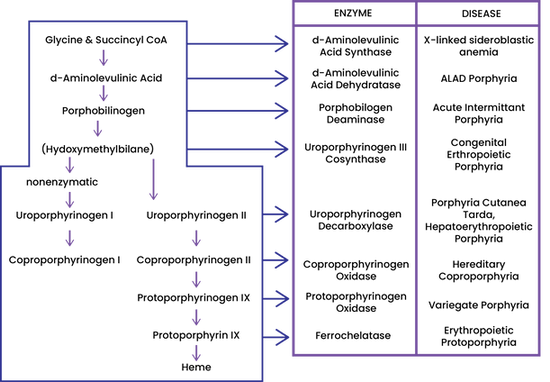What Is Porphyria?
There are eight different types of porphyria which are all caused by a build up of porphyrins in the cells of the body. Porphyrins are substances that are required for the production of red blood cells. People who have porphyria can experience a wide range of symptoms, depending on the type of porphyria they have. Some types of porphyria impact the nervous system whilst other types impact the skin.
Nervous system symptoms, such as intense pain, confusion and arm and leg weakness, are typical of the acute porphyrias. The acute porphyrias are sub-categorised as;
Acute Intermittent Porphyria (AIP)
Hereditary Coproporphyria (HCP)
ALA-dehydratase Deficiency Porphyria (ALAD)
Symptoms of the skin, such as pain and blistering from sunlight, are typical of the cutaneous porphyrias. The cutaneous porphyrias are sub-categorised as;
Erythropoietic Protoporphyria (EPP)
Congenital Erythropoietic Porphyria (CEP)
Hepatoerythropoietic porphyria (HEP)
Each of the different porphyrias is caused by a disruption to one step in the pathway that produces heme. Heme is a critical chemical in red blood cells as it helps transport oxygen around the body.

